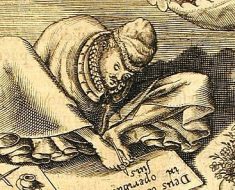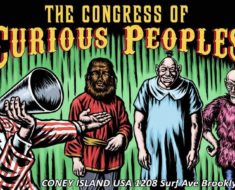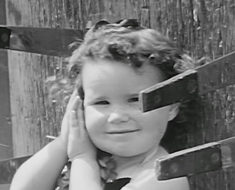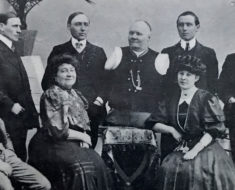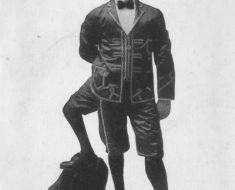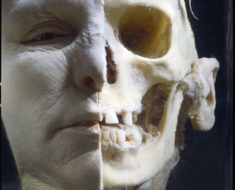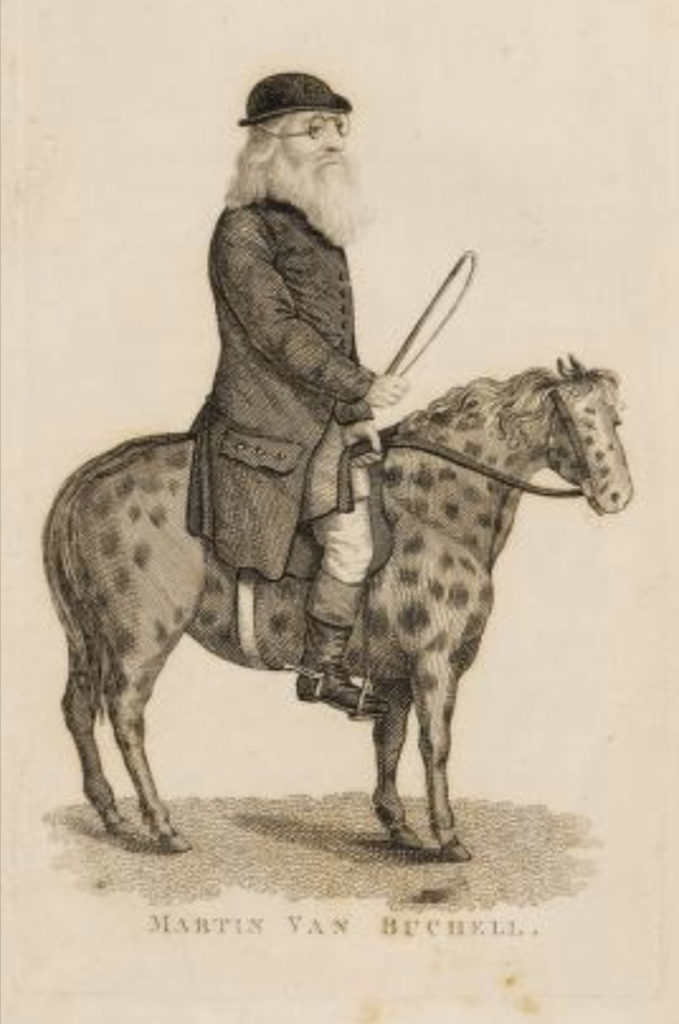
Martin Van Butchell, the eccentric surgeon and dentist.
If you were walking along London’s West End or Hyde Park in the 18th century, you might have witnessed Martin Van Butchell, an eccentric surgeon and dentist who rode around town on his spotted pony. And if so, you might have wondered where he found a spotted pony. The answer is simple: he didn’t. Van Butchell painted the spots himself—either purple or black. Sometimes he painted the whole pony. He also wore an eight-inch flowing beard and carried a large bone.
Van Butchell took an early interest in the art of anatomy and studied under the tutelage of the renowned surgeon, John Hunter. Hunter learned his trade in part by digging up corpses at night and dragging them back to his laboratory to cut open and explore.
Though Van Butchell didn’t dig up corpses, he did have his wife, Mary, embalmed after her death in 1775. The preservation was done by Hunter’s brother, William, along with fellow anatomist, William Cruikshank. Van Butchell happily assisted in the process. Once done, Mary was fitted with glass eyes and dressed in a white lace gown.
All gussied up, he placed his deceased wife in a case with a glass lid and gladly exhibited her to friends, family, patients, and other curiosity seekers. Visitors were welcomed between the hours of 9:00 and 1:00, Sundays excluded.
The body was later described as a “mockery of a once lovely woman, with its shrunken and rotten looking bust, its hideous, mahogany colored face, and its remarkably fine set of teeth!”
After remarrying—yes, he remarried—his new wife, Elizabeth, made it clear she wasn’t pleased with the body of her predecessor in the house. So Van Butchell gave Mary to John Hunter for inclusion in his museum of medical oddities.
As for the living, Van Butchell took pride in his training under Hunter and offered many delightful services for those in need. In his own words, he was “very long in the habit of curing fistules, piles, wens, carbuncles, mattery pimples, inflammations, boils, ulcers, aching legs, tumors, abscesses, strictures, and ruptures, without confinement, burning, or cutting.”
Yes, all that could be cured “often speedily.” So could dentistry ailments. A full set of dentures cost £105—a considerable sum, particularly in the late 1700s.
In case riding around on his purple pony didn’t get enough attention, Van Butchell made sure to spread the word about his many skills in various newspapers, as the following advertisements illustrate (with his styling):
BY the GRACE of GOD.
We—CURE—Sad—TOOTH—Ach:
In Twenty Minutes:—Without Drawing It:
LIKEWISE, Bad RUPTURES: Very
SPEEDILY.
With Fit Bandages:— That do not Torture.
MARTIN VAN BUTCHELL:
Surgeon for the Teeth:—More than Thirty
Years.
“They—that—seek—shall—find.”
TUMORS—ON—FACES:
Gums,—Necks,— and Arms of—The fairest
Ladies:
And Fair Gentlemen:
STYS—upon-EYE-LIDS:
Paralytic—Strokes:—Weaknesses—of—
Joints:
BIG— VEINS—IN—MAN’s—LEGS
FUNDAMENTAL-ills:—PROLAPSY-ani:
WENS and CARBUNCLES:
Swellings— near—the—Groin:—Fistule—
and Piles:
CURED—without—CUTTING;
Or SCARIFYING.
Van Butchell died in 1814 at the age of 79, due to “a complete decay of nature.” He was interred at St. George’s Church burial grounds. In the meantime, Mary remained above ground. In 1815 she was moved to the Royal College of Surgeons, which had become home to the Hunterian Museum. She remained there until 1941, when her body was destroyed during a wartime bombing raid.
The peculiar doctor is often regarded as a quack. Though, as a 1952 booklet on Van Butchell comments, “Quackery and blatant advertising were then rife.” The writing also notes that many of his patients “stated that they considered themselves fortunate to have been under his care; in most cases despair had been turned to joy!”
If he got rid of their tumors, wens and/or carbuncles, they surely didn’t care if he was a purple pony-riding, wife-embalming quack or not.

